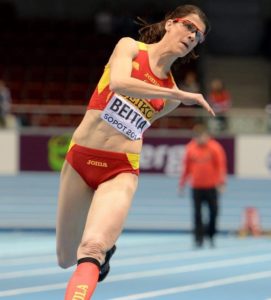Track and Field
- I don’t fully understand why track and field is only appealing to me as an Olympic sport, why I would never watch the track and field world championships or any other major competitions. I guess it mostly hinges on how Olympic track and field fits into the greater Olympic narrative…for some reason all of the analogies coming to mind have to do with foods that I would eat in combination with other foods, but not on their own, so I’ll spare you those thoughts. BANANAS.
- Part of it is also the fact that the stadium is open-air, while I believe most of the major track and field competitions are indoors (don’t cite me on that). Not that they ever really show the sky above the Olympic stadium, so it’s not technically in the frame, but it’s in the diagesis. You know it’s there, exposed, even when you aren’t seeing it.
- At first I was flummoxed trying to figure out why high jumpers got three misses per height rather than three overall. It didn’t seem fair that one jumper could go through the first rounds with no misses at the lower heights, then have three misses at, say, 1.94, and lose to someone who had two misses on all of the lower heights, barely squeaked by on the final attempt at each, and then barely squeaked by at 1.94. Even though it technically makes sense because the person who cleared 1.94 literally jumped higher, it felt a little hinky. Like the person who had three misses at 1.94 but none before that should get a few extra tries at 1.94 or something.
- Oh!–I realized toward the end of the competition– the number of misses is how they determine the medals if multiple people end up with the same final height! It doesn’t completely address my initial question, but it does go a long way, and explains how ties are addressed (in doing some very nominal googling, I also learned that if two jumpers clear the same final height, have the same number of misses at that height, and have the same number of misses overall, they have a jump off.)
- I further enjoy the high jump because the women’s outfits make them look like superheroes, especially the red and yellow outfit worn by the eventual winner, Ruth Beitia:
 Also, she’s 37, and it’s always somehow comforting to know that there are still Olympic champions older than you are.
Also, she’s 37, and it’s always somehow comforting to know that there are still Olympic champions older than you are.
- I loved seeing high jumper Inika McPherson, who is only 5’4″, competing against the rest of the high jumpers (the majority of whom were around 6 feet tall). I did wonder why there are weight classes for wrestling but not height classes for high jump or long jump.
- Why are some races tactical (the longer ones) and others not? If I’m remember right the 100, 200, and 400 are strictly separated into lanes and the 800 and up are slightly more free-for-all. I understand that that has to do with the staggering of the track, since the staggering can’t even things out when the runners are doing more than one lap…but it does make the middle and long distance races completely different in character (which, to be fair, I suppose they already are in terms of power versus pacing, typical runner body type, et cetera). But how is it fair if there are two runners from a particular country in the final who can team up against a lone runner from another (like the two Ethiopian runners and Mo Farah in, I believe, the 1500m?) I get irate enough when people are fanned out abreast on the sidewalk, slow-walking. I cannot imagine the frustration here.
Posted by Claire & filed under Blog. This post has one comment.


 Also, she’s 37, and it’s always somehow comforting to know that there are still Olympic champions older than you are.
Also, she’s 37, and it’s always somehow comforting to know that there are still Olympic champions older than you are.



Brenda Hieronymus
I do believe you were on the track team at one point. Maybe therein lies your original interest.